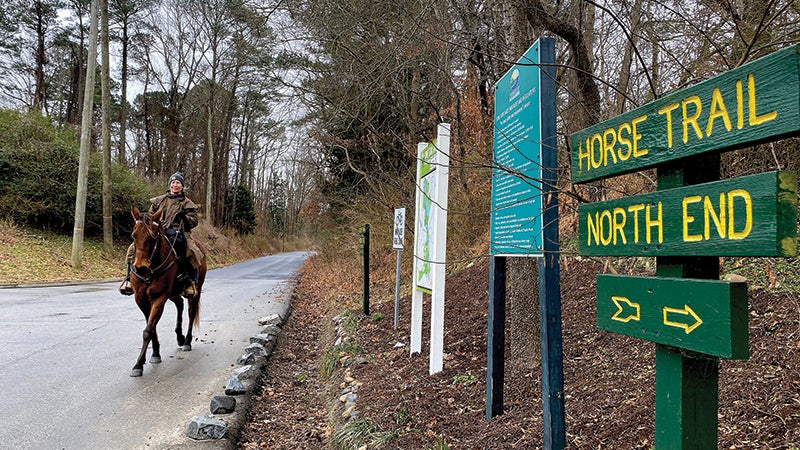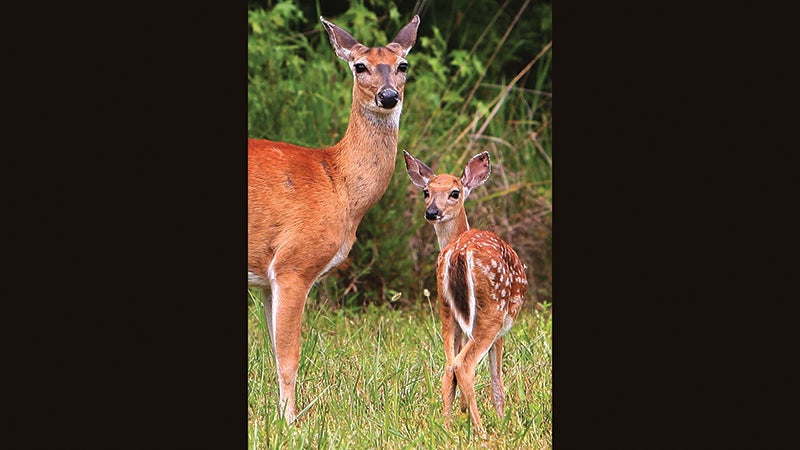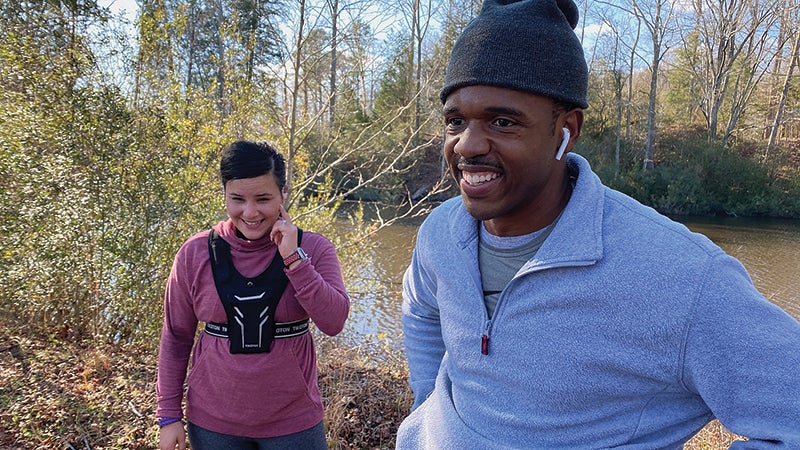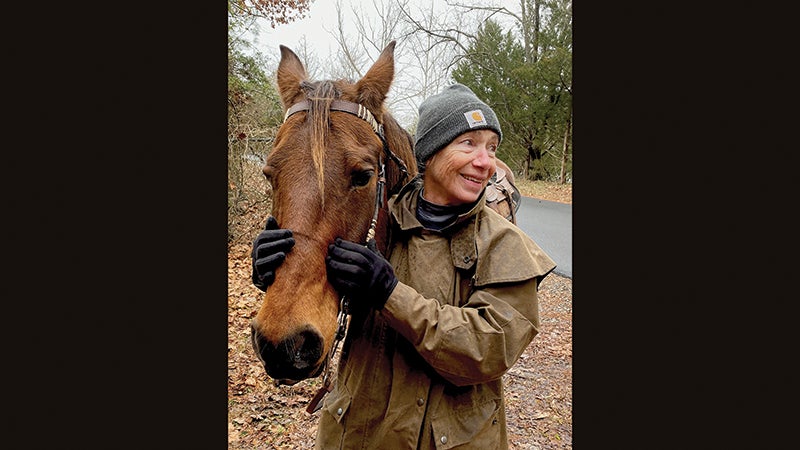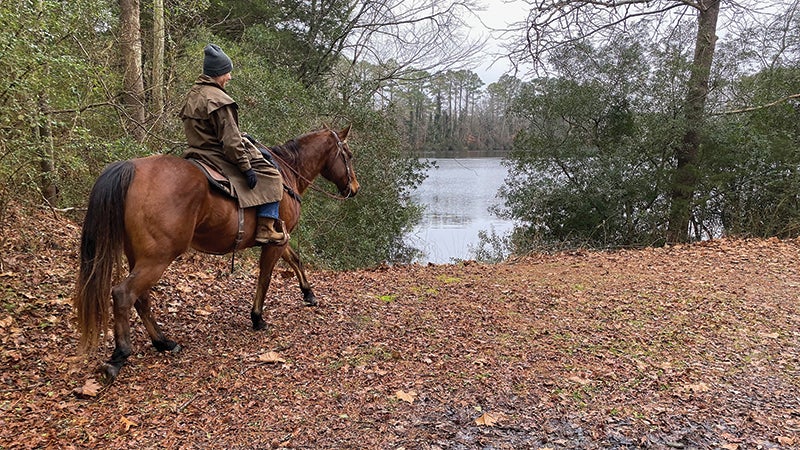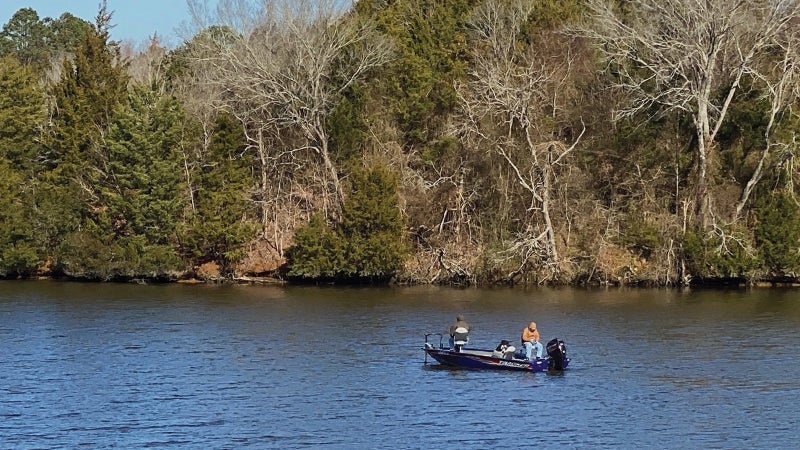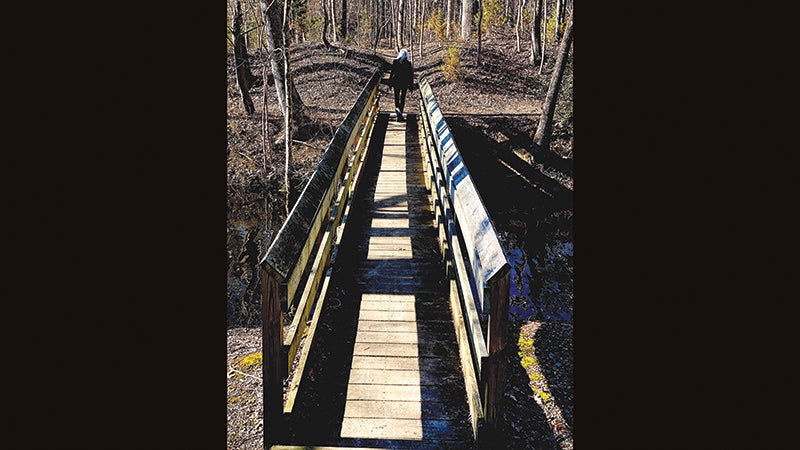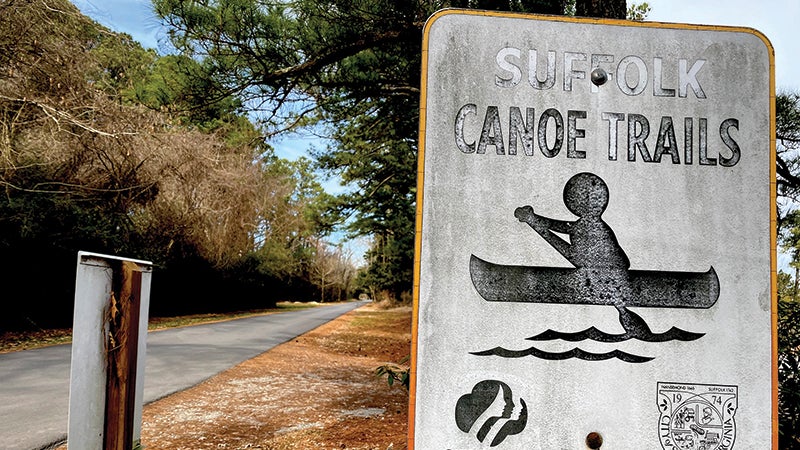Spring break at the Lakes
Published 2:13 pm Wednesday, March 31, 2021
|
Getting your Trinity Audio player ready...
|
Story by Phyllis Speidell
Photos by John H. Sheally II
Ready to enjoy spring? A tediously long winter can nudge even the most sedentary couch potato up and out to seek warmth, sunshine and budding greenery. But with pandemic cautions still in place, where to go to safely celebrate spring?
Lone Star Lakes Park in Chuckatuck offers the perfect near-by escape — whether you fish, crab, canoe, kayak, hike, bike, run, ride horses or just take your pup for a stroll. Well maintained roads, trails, mini-gardens, picnic tables, grills, benches and sanitary facilities dot the heavily wooded grounds surrounding 11 freshwater lakes just waiting for your first cast. If your favorite catch swims in a saltier home, you can find a brackish lake and two brackish creeks as well.
The lake entrances are marked with smile-inducing signs — Blue Gill Hill, Lunker Landing, Citation Station — and footbridges enable wider water views. Fishermen say speckled trout, bluegill, crappie, catfish, bass, and perch are all somewhere in the lakes.
Ed Meadors and Bobby Davis, neighbors and friends from Courtland, brought a boat to Lone Star Lakes on a cool morning, hoping to find spotted — or speckled — trout. The two have fished together for years, often in the Southern Branch of the Elizabeth River between St. Juliens Creek and the Gilmerton Bridge or in the Western Branch off West Norfolk in Portsmouth. On this morning, however, when they had had no luck in the Elizabeth River, they opted to try Lone Star Lakes.
Meadors said, “We decided to try a turn around Crane Lake” and laughed as he added, “So for this we need a freshwater license to catch sea fish in brackish water.”
The park attracts more than fishermen. The wooded trails lure mountain bikers, while recently smoothed roadways attract bikers, walkers and runners, including two active-duty U.S. Navy sailors, both on shore duty at Naval Station Norfolk.
DeQuon Smith lives in Suffolk, stumbled on the park a while ago and comes often to run. On this morning, he met another runner, coincidentally another sailor, Tiffany Williams. Originally from Orange County, Calif., but living in Smithfield, Williams was enthused about her first time in Lone Star Lakes.
“I love running on the smooth roads,” she said.
For children needing to run off some excess energy, Lone Star has a playground with swings and slides in good repair as well as places for parents to relax when they’re not pushing a swing.
Lone Star Lakes is about 10 miles or less from the busy Route 10 and Route 17 corridors, but the park’s quiet, scenic ambience make it seem worlds away.
Marie Hansin and her 20-year-old quarterhorse, Bentley, enjoy the park and its four-mile wooded equestrian trail. Her son lives a short distance away, so the park is a convenient as well as scenic place to ride. For the safety of horses, motorists and bicyclists, the park requires riders to trailer their horses to a designated parking area near the equestrian trail on the north side of the park.
Lone Star Lakes, a Suffolk city park for almost 50 years, was once part of the Nansemond Indians’ ancestral lands. The Nansemonds, living in small family clusters, thrived — hunting, fishing and raising their crops along the Nansemond River. Mattanock Town, a historic cultural restoration area in development by the tribe, sits on what was formerly part of Lone Star’s acreage. Each year, the tribe hosts a powwow open to the public at the park.
Many years ago, sea levels were higher, and Virginia’s coastline was about 50 miles west of the current oceanfront, lying instead along a ridge known as the Suffolk Scarp. The residual ridge is still visible along the west side of Route 10 as it runs from Smithfield to Suffolk, passing Lone Star Lakes and Chuckatuck.
Then the park’s land was filled with long bars of compacted coquina (calcium loaded shells and shell fragments), covered with 20 feet of water. Geologists believe that the coquina bars stretched from south of Chuckatuck to as far north as Yorktown. The shell remnants melded with sand and clay to form marl, rich in calcium carbonate and a valued component in concrete and fertilizers with high lime content.
According to the Greater Chuckatuck Historical Foundation, marl mining around Chuckatuck focused on the Lone Star Lakes area. For almost 50 years from the mid-1920s, Lone Star Industries mined the now parkland and barged the raw marl downriver to processing plants in South Norfolk. In the early 1970s when the cost of meeting EPA standards rendered the business unprofitable, the company shut down the operation.
Water filled in the marl pits, creating tempting, if treacherous, swimming holes for local youngsters. The city of Suffolk acquired the land in 1977. Today, while swimming, as well as water skis, surfboards, tubes and inflatables are prohibited, a range of other activities draws visitors to the park’s 1,000-plus acres of tranquility.
Lone Star Lakes park supervisor N. Russ Greene has worked in several of Suffolk’s parks since 2006. Now superintendent of parks for Suffolk Parks and Recreation, he has also supervised Lone Star Lakes on site since July. He calls the park “the most natural of all the city’s parks.” The park attracts a wide variety of birds including ospreys, eagles, hawks and smaller birds. Visitors walking one of the trails might also glimpse deer, foxes, raccoons, coyotes and squirrels.
Seven miles of maintained trails invite exploration — and the discovery of an array of forageable plants, including wild mushrooms, persimmons and a variety of uncommon greens. Greene said that the park has hosted several foraging adventures for groups interested in learning more about edible wild plants.
Nakiesha Bridgers, the park’s outdoor programs specialist, develops a roster of special programming including evening stargazing walks, birdwatching, stand-up paddleboarding classes, archery classes, guided kayak tours and more. Outdoor Recess, a program aimed toward students who have been in virtual classes all year, explores the outdoors, rain or shine, and includes wildlife topics aimed to enhance a child’s confidence in outdoor spaces.
Bridgers is also open to developing special programs and working with groups wanting to plan a private tour or a special interest event in the park.
In addition to the park’s programs, local groups including the Kingsboro Bowman and the Hampton Roads Radio Control Club meet regularly at the park’s archery range and remote control airplane flying field.
As the days get longer, take a few minutes, take a stroll, take a deep breath of fresh air and take a mini-spring break at the lakes.


